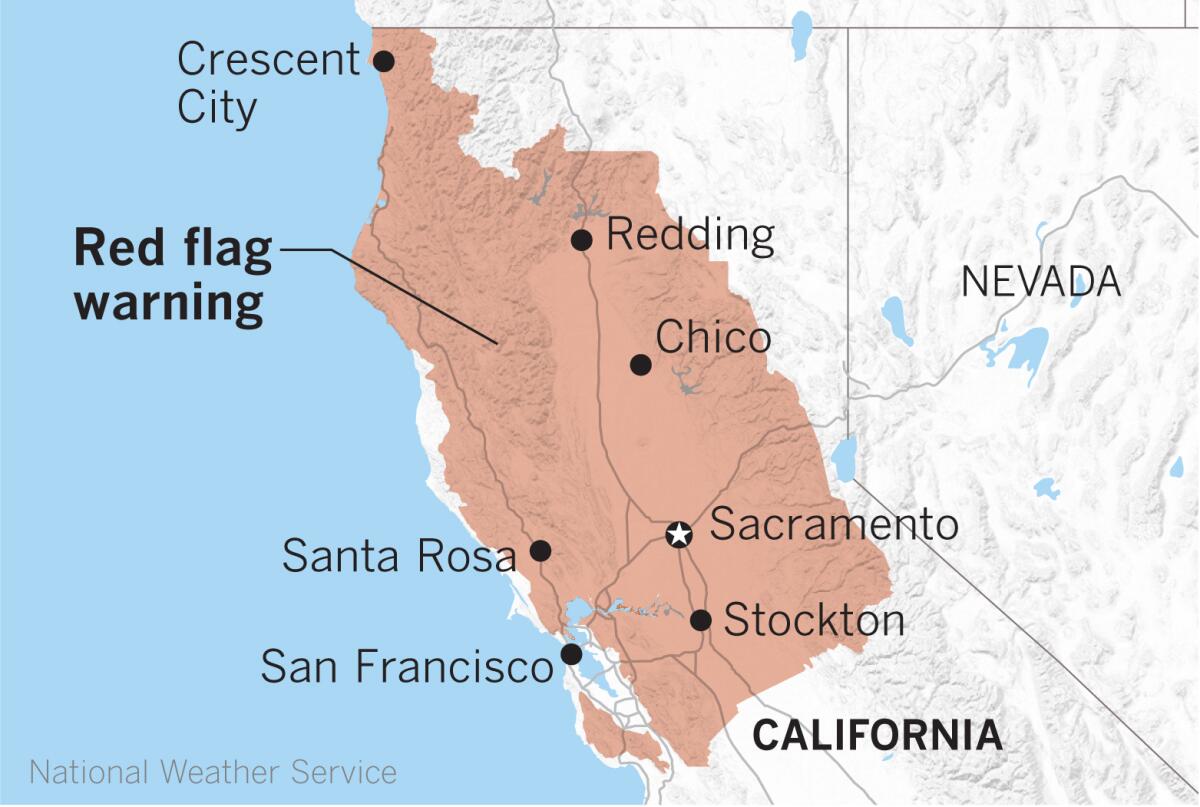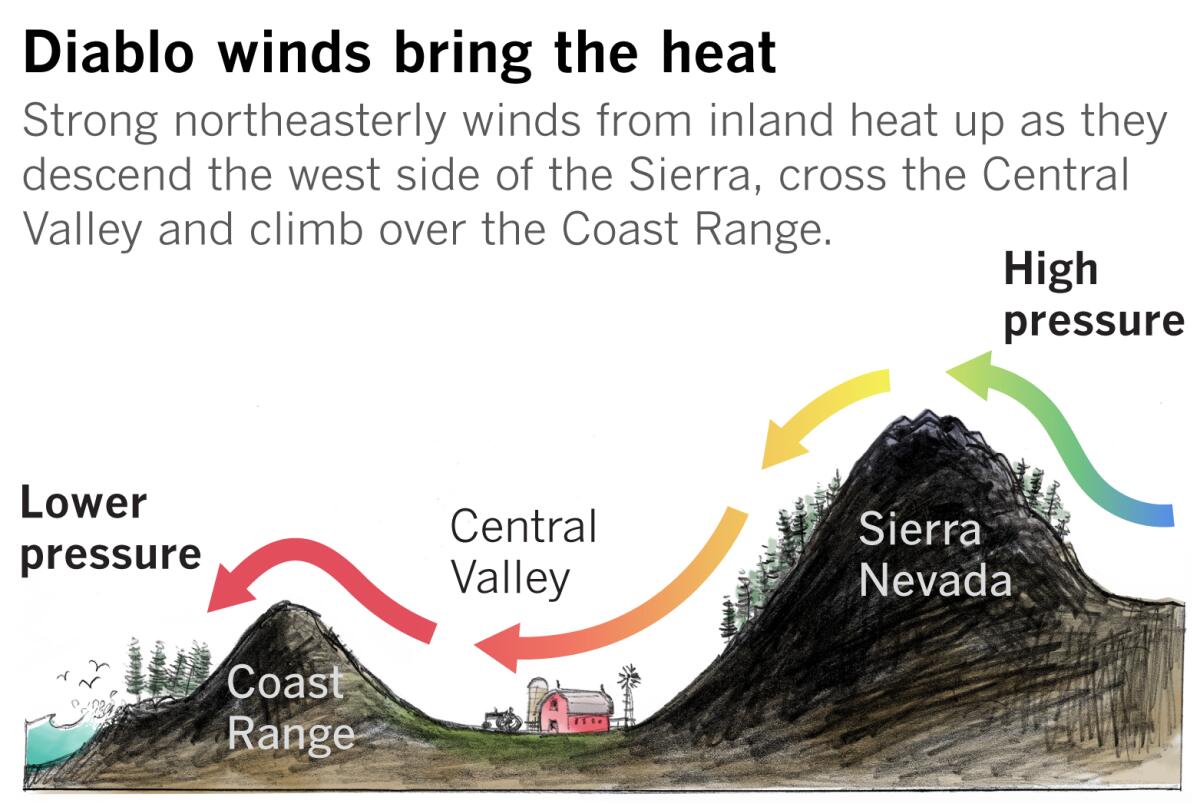Diablo winds and low humidity will bring critical fire weather to Northern California through Friday

Widespread red flag fire warnings will be in effect in Northern California for extremely dry, gusty, north-to-northeast winds, resulting in critical fire conditions. The primary period of concern is from Wednesday morning through Friday morning, the National Weather Service said.
A ridge of high pressure continues to build along the West Coast, driving up temperatures. That heat will be augmented with additional warming and drying from offshore winds.
The strongest winds are expected from Wednesday evening through Thursday morning. Relative humidity during the daytime will plummet to the single digits and teens and will recover only to the 20% range overnight during the period.
Winds could reach about 45 mph, especially in the hills, with gusts to 55 mph over the highest ridges.
Pacific Gas & Electric has said that power shutoffs may be necessary in parts of 24 counties.
Red flag warnings cover much of Northern California from about Santa Cruz north to the Oregon border. The warnings stretch from the northern San Joaquin Valley and the western slope of the Sierra, north through the Sacramento Valley to near Mt. Shasta, then over to the Crescent City area and the coast.

These offshore winds are often called Diablo winds, which are similar to the Santa Ana winds familiar to Southern Californians, according to Roger Gass, a meteorologist in the National Weather Service’s Monterey office.
Like Santa Ana winds, Diablo winds originate hundreds of miles inland, in the desert regions of the Great Basin. There, circulation around a strong area of surface high pressure flows over the Sierra Nevada, heading toward lower pressure at sea level.
The air rushing over the peaks and hurdling down the western mountain slopes heats up from compression, dries out and speeds up as it is forced through narrow canyons and passes.
Because of dry fuels, extremely low humidity and breezy north-to-northeast winds, any fires that start will spread quickly, forecasters warned.
More to Read
Sign up for Essential California
The most important California stories and recommendations in your inbox every morning.
You may occasionally receive promotional content from the Los Angeles Times.









